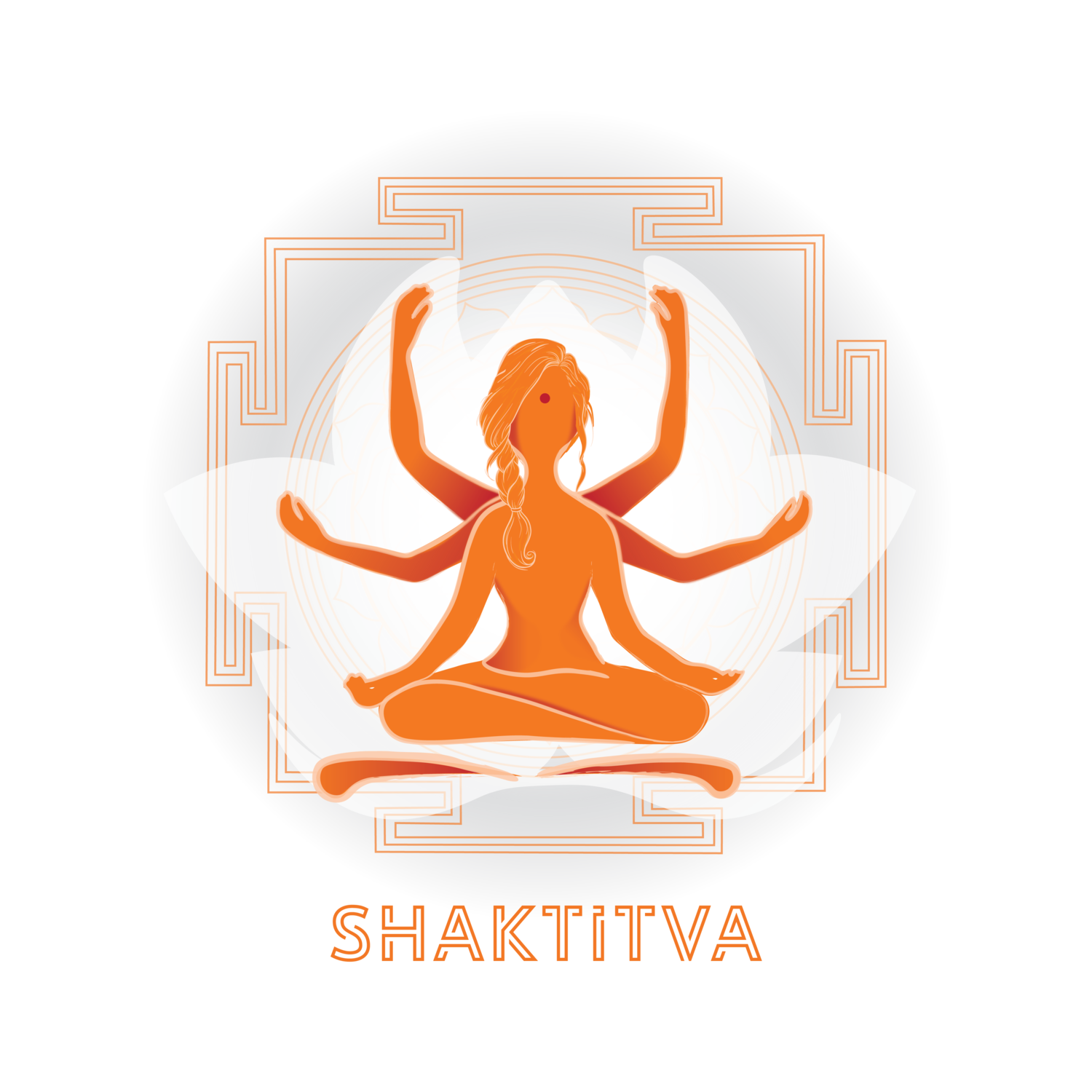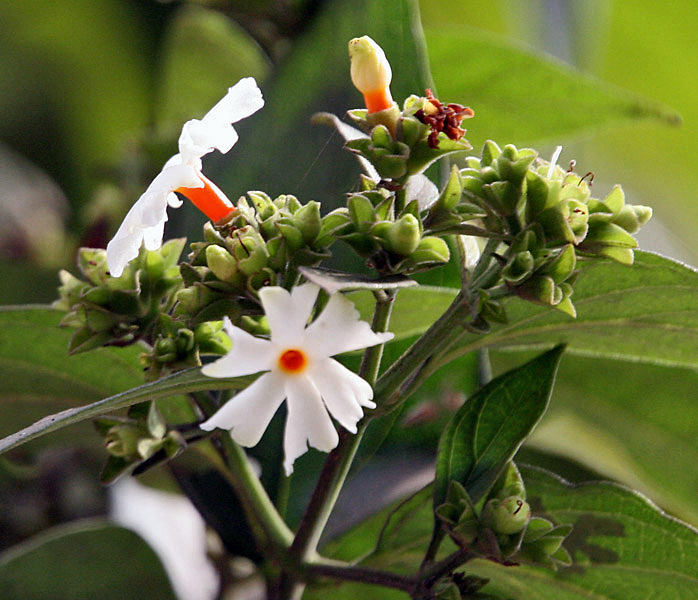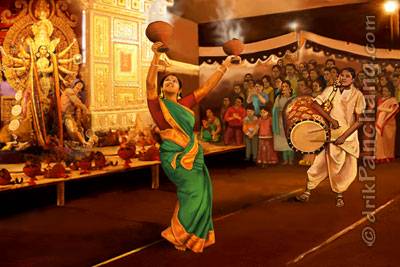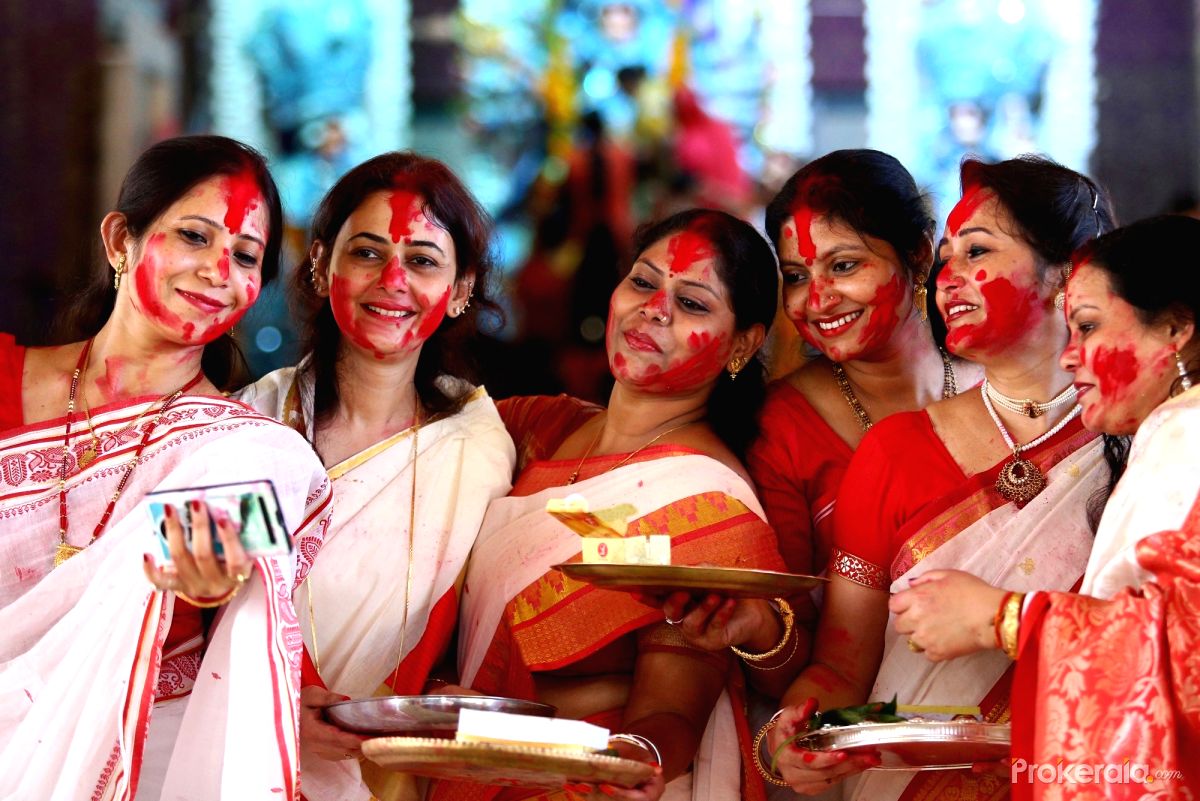The Indian flower called “Harsingar” or “Shiuli”
Image Credit: Wikipedia
That smell of Harsingar, or “Shiuli” as we call it in Bengali, tells me, Ma is coming home. Standing in my balcony I can smell her arrival around me, and my mind takes a leap back to my memories of a half-Bengali child growing up in Uttar Pradesh. Durga Puja was just as exciting and as much awaited by me, like any Bengali kid from Bengal and if you talk to any Bengali kid, from any part of this world, memories of Durga Puja shall always have a very special place from his/her childhood. May be that’s why they say, “You can take a Bengali out of Bengal, but you can never take Bengal out of a Bengali”
My first childhood memory of Durga Puja, is of dhaak, dhunuchi and display of Indian martial arts by Swami Jis of Bharat Sewa Ashram, which made every Ashtami something to wait for. I remember Ma, dressing us up quickly and reaching the venue as early as 3pm so that we get to sit in the front row of the durry (a woven mat made of thick cotton threads), even though the performances wouldn’t start until 8pm. Baba’s duty was to keep standing outside the crowds perimeter, because we kids would keep getting hungry and ma couldn’t afford to lose that spot she struggled so hard for us to sit.
Bengalis worship Shakti, and though Navratri is a nine day festival, for us it starts from shashti, sixth day, and ends with Vijaya Dashmi, tenth and last day. While in Uttar Pradesh, nine different forms of Shakti is worshipped for nine days, one designated day for each, we Bengalis worship Ma Durga throughout the festival. According to Bengali tradition, it’s the home coming of Ma with her four kids, Ganesha, Kartik, Laxmi and Saraswati. Parvati the daughter of Himalaya, comes down to earth once every year, like a daughter visiting her Maayka (mother’s house). And this is the reason why Durga Puja for Bengalis, is a festival of new clothes and lots of food, specially sweets.
Mahalaya which is ten days before Durga Puja, marks the beginning of Devi Paksha. This is the day when Ma Durga begins her journey from Kailash, where she lives with her husband. This is also the day when it’s believed that our ancestors leave their abode and come down to take offerings from their descendants. I remember going to the shores of Ganga, with Baba, where he would do “Tarpan”. It is also believed that our ancestors stay with us for a fortnight and that period is called “Mahalaya Paksha”.
For every Bengali, Mahalaya holds a very special place and it starts with Chandi Path when dawn breaks. I remember Ma, waking us up and we sleepy kids would somehow make through All India Radio’s Chandi Path broadcast. Today, even when there is TV and internet, nothing can truly substitute AIR’s Chandi Path by Late Shri Birendra Kishore Bhadra.
Mahashashti is the day when we welcome Ma Durga into this mortal world, with all the rituals, celebrations, dhaak and dhunuchi, like every Bengali household does, when their own daughter visits her parents place, after marriage. Her face is covered, till the Kalaparambho puja is done, which marks the beginning of puja. It’s a Pratishtha, a vow to conduct the puja, abiding by all its rituals. Followed by Bodhan, awakening of Gods, and Adhivas, invoking Devi in the bilva, also known as bel, plant. Last is Aamantran (invitation), requesting Ma Durga to accept our puja and offerings.
The tradition Dhununchi dance of Bengal on the beats of “Dhaak” drum
Mahashaptami, is when you actually start feeling the hustle and bustle of Durga Puja. A very important part of this day is bringing “Kola Bou” (banana plant), Ganesha’s wife. We wake up early in the morning and give her a bath, wrap new saree and place her next to Ganesha. Another very important ritual of Saptami is Navapatrika. The nine forms of Devi are invoked in nine plants and given a bath before sunrise. This is followed by Mahasnan. We keep a mirror in front of Durga’s idol and her reflection in the mirror is given a bath. After all of this is Pran Prathishta, awakening the spirit of Devi. Ma Durga is worshipped with sixteen special puja items. Every evening after Sandhya Aarti, Dhunuchi naach is a must. For Bengalis Durga Puja is about Ma Durga and also about dhaak, dhunuchi and food for Bengalis are born “foodies”.
Maha Ashtami, most important day of all the puja days, starts with Kumari Puja. I still remember when I was blessed to be the Kumari for two consecutive years. Girls between 7 and 9 years of age are dressed up and worshipped as Devi. In earlier days, we had a buffalo sacrifice as well, which marked the vanquishment of buffalo demon, Mahisasura. Today, this practice has been modified and instead ash-gourd is sacrificed.
In many ways, Maha Ashtami is one of the most important day of the entire Durga Puja. Everyday we have pushpanjali, but Maha Ashtami’s pushpanjali is most sacred of all. We usually keep our best dress for Ashtami evening and during morning, women prefer wearing something in white and red. The most important part of entire Durga Puja is “Sandhi Puja”. 24 minutes before Ashtami ends and 24 minutes before Navami begins, that period is called the “Sandhi Khan”, as this is the time when Devi Durga slayed the demon brothers Chanda-Munda. Therefore, the Devi is worshipped in her Chamunda roop. There’s a rush to light the 108 diyas and whoever gets a chance, feels blessed because the Goddess chooses the devotees herself. Here I have to add an interesting story that we have often heard in our childhood, specially those from Kashi, like myself. All through the nine days, Devi fought many demons till she finally slays Mahisasura. It’s said that when Devi was meditating in her cave at Vindhyachal (about 300km from Varanasi), she threw her sword and killed Shumbha-Nishumbha. Her sword struck the ground and from there a river emerged, which is called “Assi”, which also gives its name to Varanasi, the place between Varuna and Assi rivers.
By Maha Navami, the heart is already heavy. It’s almost time for Ma to go back to her home in Mount Kailash. It’s also the ninth and the last day of battle between Durga and Mahisasura. It starts with “Shodhasopachar Puja”, shodash means sixteen and upachar means service. This puja includes sixteen steps and Ma is worshipped as Mahishasurmardini. At the end of the puja, there’s a special homa, after which everyone puts a tilak of Homa ash. For some reason, we used to be excited about that tilak even as children who did not know its significance. That vibhuti (ash) mark on our forehead was worn with pride!
Sindoor Khela
Image Credits: ProKerala
Vijaya Dashami, when we bid adieu to Ma with teary eyes and a promise to welcome her again next year with the same love and devotion. Since she visits us as the daughter, we do “boron” (aarti), apply aalta (red coloring on her feet)-sindoor to her and feed her sweets, just like how we would do when a married girl is leaving her parents home. We quietly whisper in her ears, “next year come soon”. The connection with Ma Durga is so intense, for us Bengalis, that this is the moment when most people quietly wipe tears off of their eyes. I do it too. Then begins the famous “Sindoor khela” , which has become such an important part of the cultural identity of Bengal. Women apply sindoor to each other and offer sweets. This part of Durga Puja was always very fascinating to me and I would always make my mother take me for sindoor khela.
Lastly, “thakur bhashan” or the immersion of idol, which forms a very important part of my Durga Puja memories all my life. The actual visarjan happens in a vessel of water with a mirror, kept in front of Ma, and everyone has a darshan of Ma in that mirror. It’s called darpan visarjan, which has to happen on a specific time, while the main moorti then can be taken in a procession for the visarjan. During my formative years, Varanasi was still a small city and we would walk all the way from our Durga Puja club to Ganga ghat. The cacophony of dhaak, dhunuchi naach and “Bolo Durga Ma ki Jai”, was enough to keep our spirits high for that long walk. Going with the procession for Visarjan is perhaps the one thing I miss the most every year...




